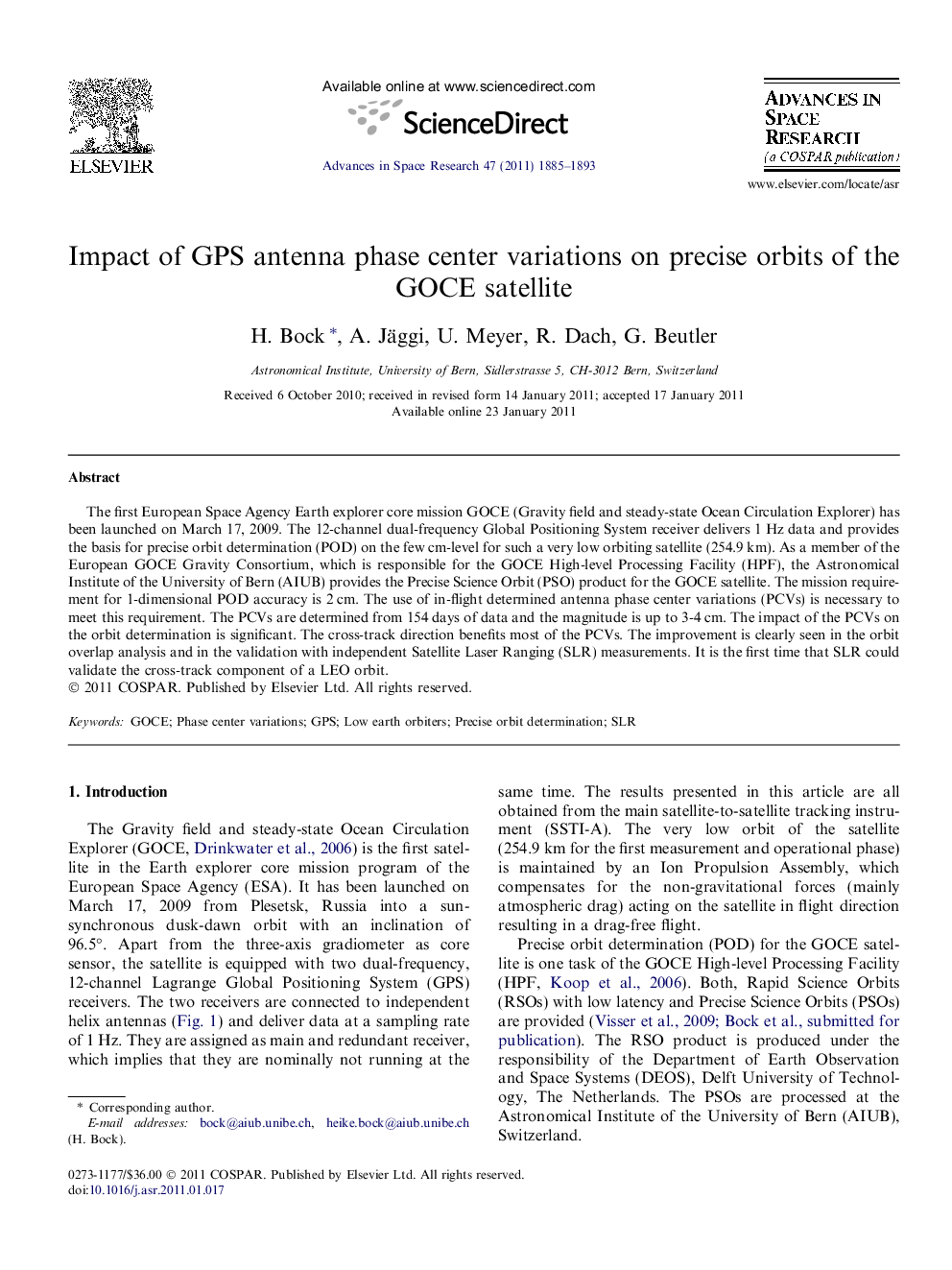| Article ID | Journal | Published Year | Pages | File Type |
|---|---|---|---|---|
| 1766691 | Advances in Space Research | 2011 | 9 Pages |
The first European Space Agency Earth explorer core mission GOCE (Gravity field and steady-state Ocean Circulation Explorer) has been launched on March 17, 2009. The 12-channel dual-frequency Global Positioning System receiver delivers 1 Hz data and provides the basis for precise orbit determination (POD) on the few cm-level for such a very low orbiting satellite (254.9 km). As a member of the European GOCE Gravity Consortium, which is responsible for the GOCE High-level Processing Facility (HPF), the Astronomical Institute of the University of Bern (AIUB) provides the Precise Science Orbit (PSO) product for the GOCE satellite. The mission requirement for 1-dimensional POD accuracy is 2 cm. The use of in-flight determined antenna phase center variations (PCVs) is necessary to meet this requirement. The PCVs are determined from 154 days of data and the magnitude is up to 3-4 cm. The impact of the PCVs on the orbit determination is significant. The cross-track direction benefits most of the PCVs. The improvement is clearly seen in the orbit overlap analysis and in the validation with independent Satellite Laser Ranging (SLR) measurements. It is the first time that SLR could validate the cross-track component of a LEO orbit.
